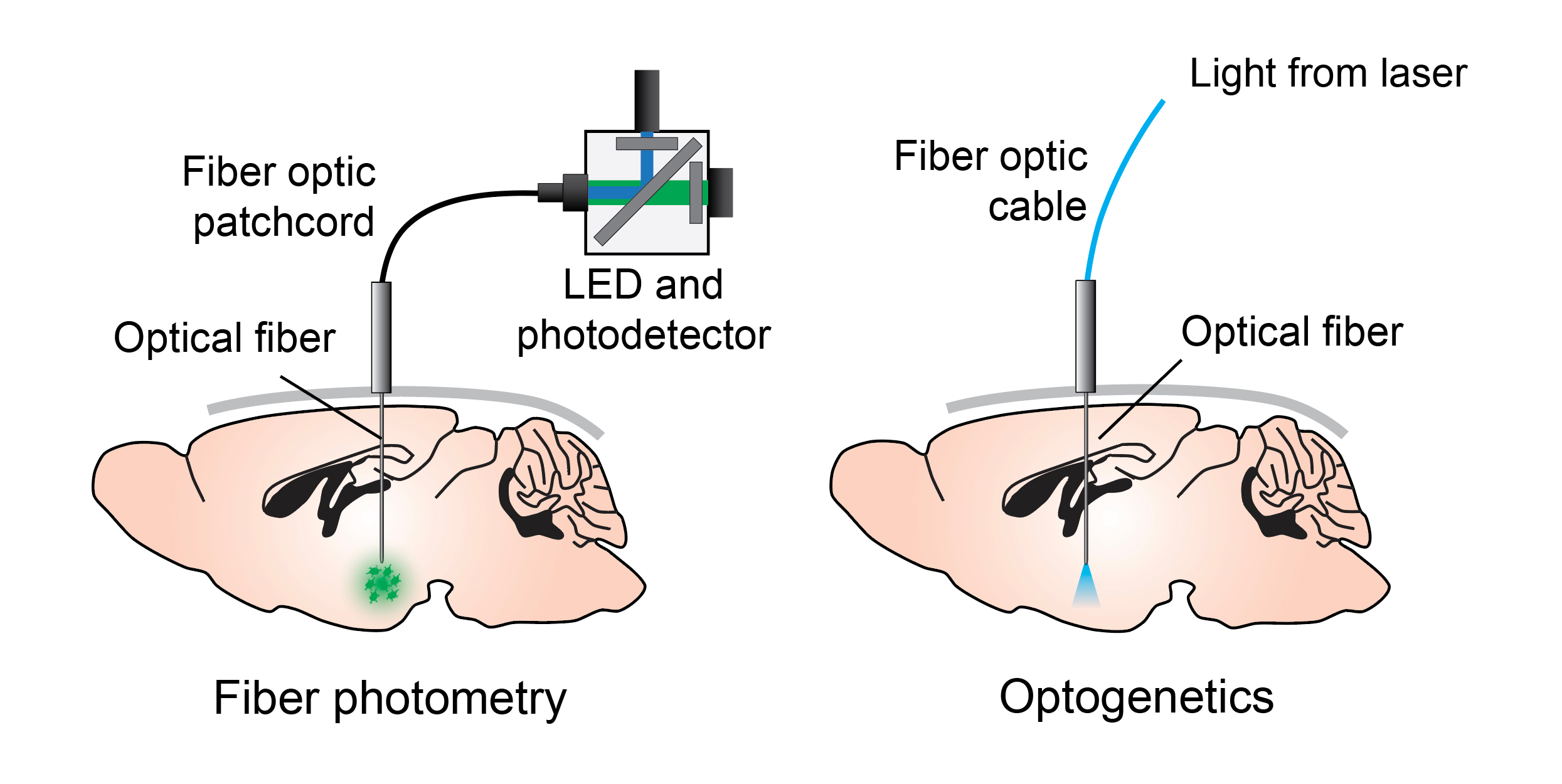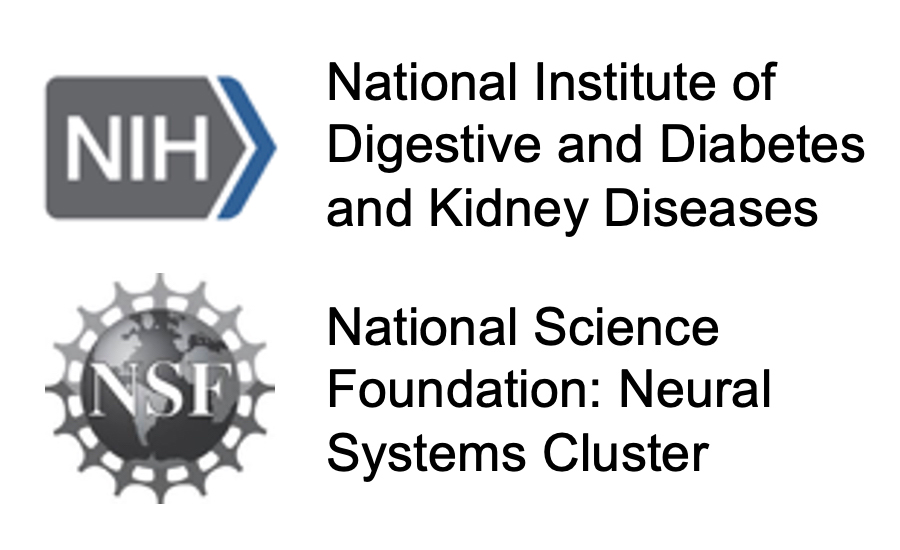
Overview
To ensure that an animal obtains an optimal amount of food, sleep, and water, the brain must sense the internal and external environment and influence behavior by producing sensations we describe as “hungry/full,” “tired/awake,” and “thirsty/quenched.” The ultimate goal of our lab is to elucidate the neural basis of these homeostatic systems. Which neural populations and neural networks in the brain play an important role in maintaining homeostasis, and how does their activity affect animal physiology and behavior?
 To address these questions, our lab combines mouse behavioral experiments with a variety of approaches. Fiber photometry methods record the activity of specific neuronal populations in freely moving, behaving mice. Optogenetic and chemogenetic methods can be used to stimulate or inhibit specific neuronal populations to test hypotheses about the role of these neurons in behavior. Neuroanatomical and microscopy methods allow us to study neural morphology and connectivity throughout the nervous system. By taking an integrative approach and performing experiments at the behavioral, physiological, molecular, and anatomical levels of investigation, we hope to make substantial contributions to understanding these homeostatic behaviors, and ultimately how they affect the health of the entire organism.
To address these questions, our lab combines mouse behavioral experiments with a variety of approaches. Fiber photometry methods record the activity of specific neuronal populations in freely moving, behaving mice. Optogenetic and chemogenetic methods can be used to stimulate or inhibit specific neuronal populations to test hypotheses about the role of these neurons in behavior. Neuroanatomical and microscopy methods allow us to study neural morphology and connectivity throughout the nervous system. By taking an integrative approach and performing experiments at the behavioral, physiological, molecular, and anatomical levels of investigation, we hope to make substantial contributions to understanding these homeostatic behaviors, and ultimately how they affect the health of the entire organism.
Recent and ongoing projects
Elucidation of neural populations and circuits that suppress appetite. In recent years, we have identified and characterized parts of the nervous system that play a role in appetite suppression. The parabrachial nucleus (PBN) contains a population of neurons that express calcitonin gene related peptide (CGRP) that strongly suppress appetite. These neurons can be inhibited by neurons in the hypothalamus that express agouti-related protein (AgRP) to increase food consumption. We recently characterized a population of neurons in the parasubthalamic nucleus (PSTN) that excite the PBN and suppress feeding. Ongoing work is aimed at further characterizing these populations and their role in real-time feeding behavior. Further reading:
- A discrete parasubthalamic nucleus subpopulation plays a critical role in appetite suppression. Kim JH, Kromm GH, Barnhill OK, Sperber J, Heuer LB, Loomis S, Newman MC, Han K, Gulamali FF, Legan TB, Jensen KE, Funderburk SC, Krashes MJ, Carter ME. eLife 11:e75470 (2022). PDF
- AgRP neurons can increase food intake during conditions of appetite suppression and inhibit anorexigenic parabrachial neurons. Essner RA, Smith AG, Jamnik AA, Ryba AR, Trutner ZD, Carter ME. Journal of Neuroscience 37(36):8678-8687 (2017). PDF
- Genetic identification of a neural circuit that suppresses appetite. Carter ME, Soden ME, Zweifel LS, Palmiter RD. Nature 503(7474):111-114 (2013). PDF
How the drive to eat and the drive to sleep affect each other. Eating and sleeping are mutually exclusive behaviors that an animal cannot engage in at the same time. Therefore, the neuronal systems that promote eating are likely to inhibit systems that promote sleep; conversely, the neuronal systems that promote sleep are likely to inhibit systems that promote feeding. Recently, we characterized the effects of food deprivation and activity in hunger-inducing AgRP neurons on sleep quantity and quality. Ongoing efforts are elucidating the interaction between feeding and sleep circuits. Further reading:
- Hypothalamic neurons that regulate feeding can influence sleep/wake states based on homeostatic need. Goldstein N, Levine BJ, Loy KA, Duke WL, Meyerson OS, Jamnik AA, Carter ME. Current Biology 28(33):3736-3747 (2018). PDF
- Understanding how discrete populations of hypothalamic neurons orchestrate complicated behavioral states. Graebner AK, Iyer M, Carter ME. Frontiers in Systems Neuroscience 9:111 (2015). PDF
Funding
 Our research has been funded by internal grants from Williams College and external grants from the National Institutes of Health (National Institute of Digestive and Diabetes and Kidney Disorders–NIDDK) and National Science Foundation (NSF), including the NSF CAREER Award.
Our research has been funded by internal grants from Williams College and external grants from the National Institutes of Health (National Institute of Digestive and Diabetes and Kidney Disorders–NIDDK) and National Science Foundation (NSF), including the NSF CAREER Award.